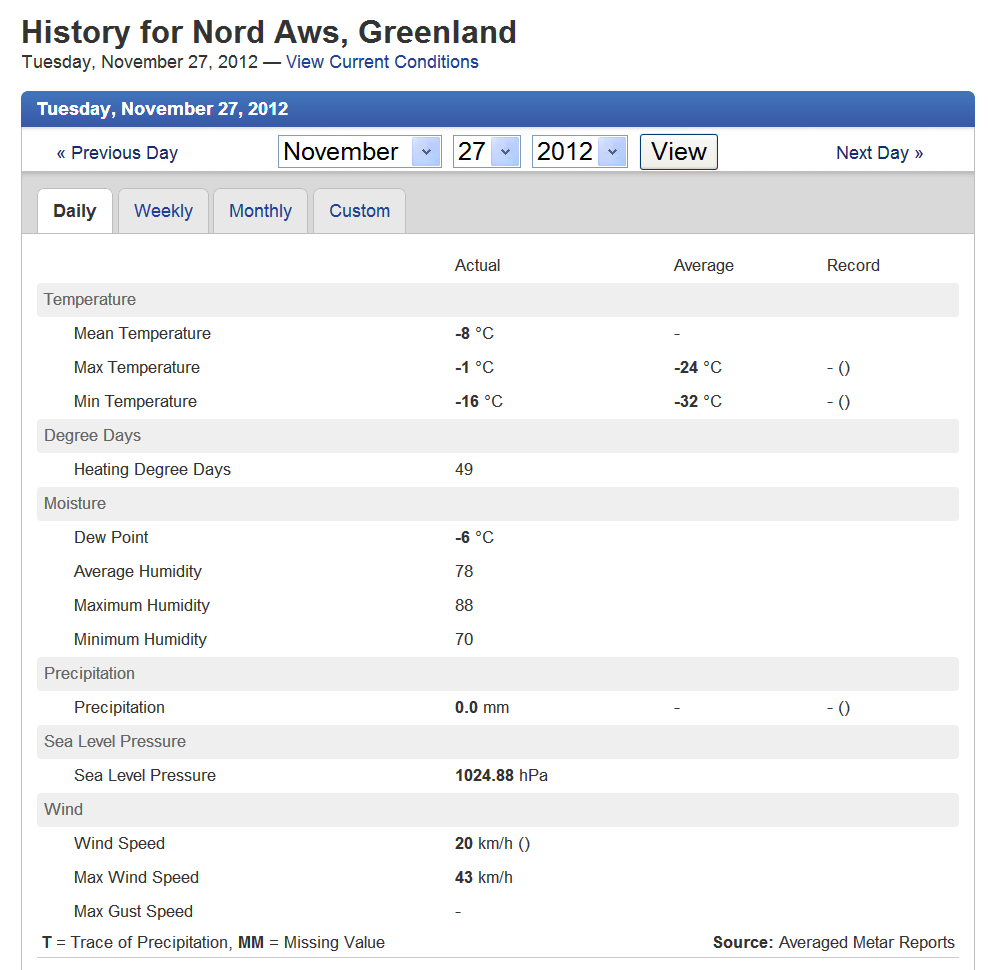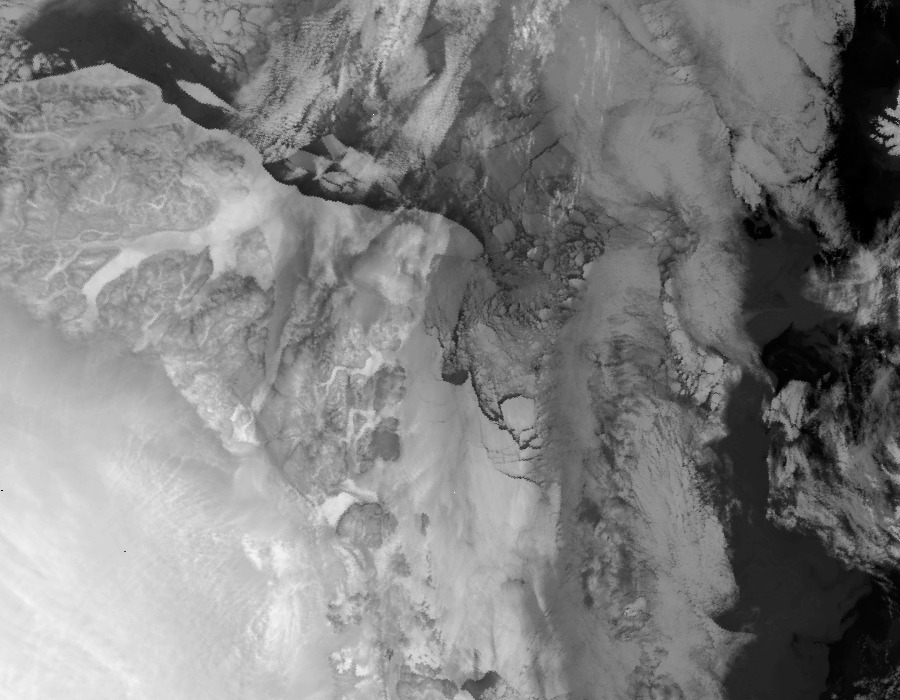December 1, 2012
The Day After Tomorrow – Coming Soon?
Roland Emmerich's "The Day After Tomorrow" is a BAFTA award winning action/adventure movie in which, according to the Internet Movie Database:
A sudden international storm plunges the planet into a new Ice Age.
A large team of scientists have spent the last four years investigating how close to the truth the movie is, under the auspices of the European Union's "Thermohaline Overturning – at Risk?" project (or THOR for short). The project web site states that their objectives are to:
- Establish an operational system that will monitor and forecast the development of the North Atlantic THC on decadal time scales and assess its stability and the risk of a breakdown in a changing climate.
- Identify induced climate impacts of changes in the THC and the probability of extreme climate events with special emphasis on the European/North Atlantic region.
- Develop and operate an optimal ocean observing system for the North Atlantic component of the THC.
- Forecast the Atlantic THC and its variability until 2025.
- Assess the stability of the THC to increased fresh water run-off from the Greenland ice sheet for various global warming scenarios.
They are doing all that because:
The climate of Europe is strongly influenced by the North Atlantic ocean circulation. Variations of the strength of the Thermohaline Circulation (THC) or the Meridional Overturning Circulation (MOC) are in several studies implicated as a main driver for decadal and longer time-scale changes for European and Northern hemisphere climate. Likewise, variations in THC is a commonly attributed mechanism for non-linear and abrupt (i.e., decadal scale) climate changes. Yet the observational and model underpinning of these hypotheses are at best sketchy making it very difficult to come to firm conclusions. Reliable quantification of the variability and stability of the THC and its atmospheric implications in today's and a warmer climate are therefore a major challenge in climate research. Whilst global models have been developed to produce long-term climate change projections, and short-term weather forecasts are carried out on a routine basis, there is a significant need for medium term regional climate forecasts, not only for the purpose of assessing the likelihood for and eventually detecting rapid climate changes, but also to assist planning in both public and private sectors.
The THOR project has just released a video summarising what they have discovered over the last four years about potential changes to the "The Gulf Stream", the name by which the THC is colloquially, if not entirely accurately, referred to here in the United Kingdom. That video is entitled "Is the Thermohaline Circulation Really at Risk?", and here it is:
The THOR team's conclusion would seem to be "Yes, it is!", albeit not in quite such a dramatic fashion as portrayed in the movie. Their findings are, however, dramatic enough as they stand:
02:20 – 90% of the people living in the Northern Hemisphere above 50° north are living in Europe and in Russia, so if you change the climate then these people will have no more crops to live on and they will have to move, so there will be a gigantic migration of people when the climate is changing here. That's why we should be interested in the stability of our local climate.
13:30 – Where we see the first and most massive climate change is in the polar regions, where the THC has its main driving engines. Fresh water, river run-off and ice discharge is now changing the ocean's composition. The Greenland inland ice alone is now discharging more than 210 cubic kilometres of ice into the Arctic waters every year. The major threats we see right now against the Thermohaline Circulation are mainly derived from the Arctic region. We see increased melting from the Greenland ice sheet. We see a retreat of Arctic sea-ice. We see large reorganisations in the Arctic ocean system which accumulates fresh water. All of these things are components which may affect the THC.
18:30 – We have developed these tools. We know, with uncertainties of course but with a pretty good measure, how the climate will develop and this is the basis for decisions to be taken for society, by the society and by the politicians. The future doesn't look "black". It's not like a Hollywood movie where we all of a sudden get an ice age. This is not going to happen, but we have to be aware of these influences that human behaviour has on the climate and we are now able to predict what is going to happen if we behave in this sort of way.
Some sobering conclusions, would you not agree? If your answer to that rhetorical question is still no, then take a look at this recent weather data from Station Nord in north east Greenland:
As you can see, the temperature is currently over 20 °C above the long term average, and there is currently open water where there should be sea-ice:
According to people who understand these things much better than I do that is a picture of a "heat polynya" and it's rather unusual to find one in that location, and at this time of year.
Filed under Climate by


Comments on The Day After Tomorrow – Coming Soon? »
It will be the end of the humans,I think they deserve it!
They deserve it on the basis that they should be intelligent enough to fix the problem, but they don't?
The latest global conference creating emissions of large volumes of "stupid hot air" is currently taking place a long way from the Arctic in Doha, Qatar. Do you suppose some meaningful actions will result?
Here's another satellite image of the current polynya just off the coast of northern Greenland:
This picture's of Cape Morris Jesup, the most northerly point in Greenland and just next door to the Princess Ingeborg Peninsula on which Station Nord is situated.
Hi,
I guess nothing special will come from that summit.
Well the whole deal, that CO2 is the cause has it roots, back to money… Yes, the climate changes, however it has more to do with the sun than anything else. 1 vulcano errruption produces more CO2 than almost all of us during 1 year.
But yes, something is changing, and we should prepare for this, but not co2. please.
I'm not quite sure what you're saying here Nico. I guess it's that you're sceptical about "Anthropogenic Global Warming"?
Fortunately there isn't a Mount Pinatubo style volcanic eruption every year, but carbon dioxide concentrations in the atmosphere keep rising, as do temperatures in the Arctic (see above!).
You disagree with President Obama when he said recently that "I am a firm believer that climate change is real, that it is impacted by human behaviour and carbon emissions, and as a consequence I think we’ve got an obligation to future generations to do something about it"?
If so, what's your theory that explains temperatures 20 degrees above average? Just random variability, a statistical anomaly?
P.S. Doing my due diligence on The Arctic Summit I've just stumbled across a review of The Day After Tomorrow by Stefan Rahmstorf. For the past 15 years Stefan has studied the thermohaline ocean circulation and its effects on climate, and in his opinion: